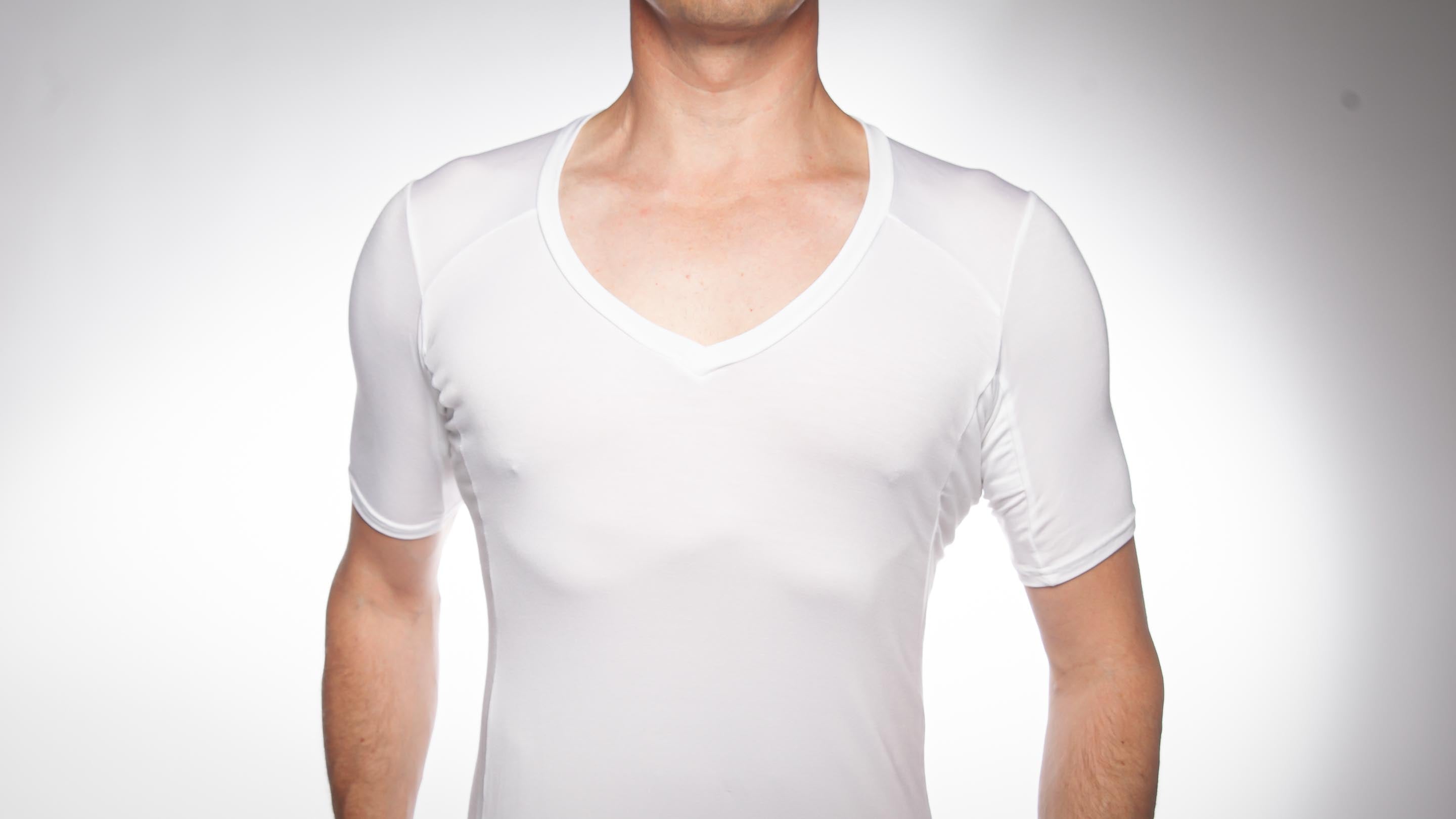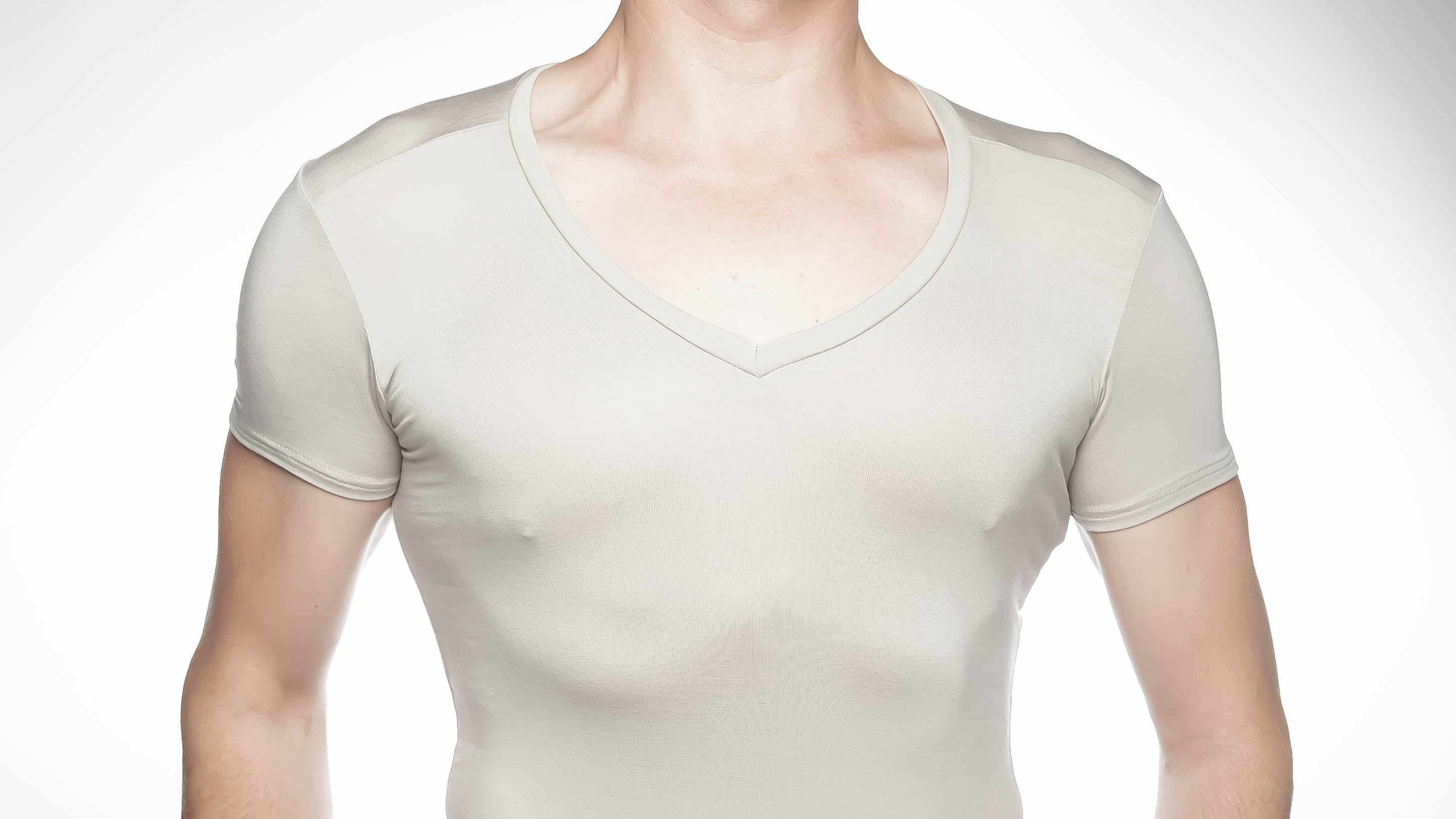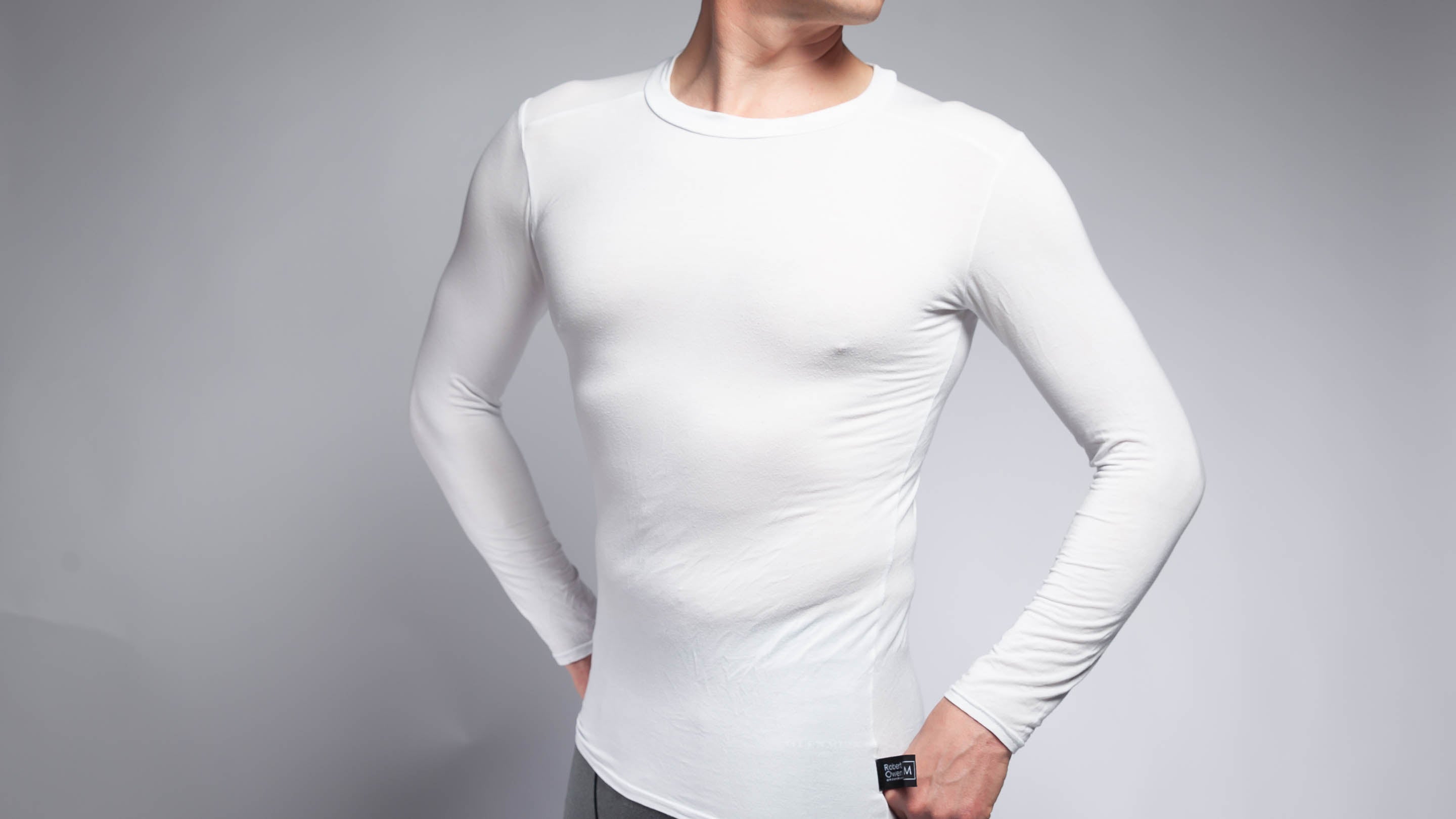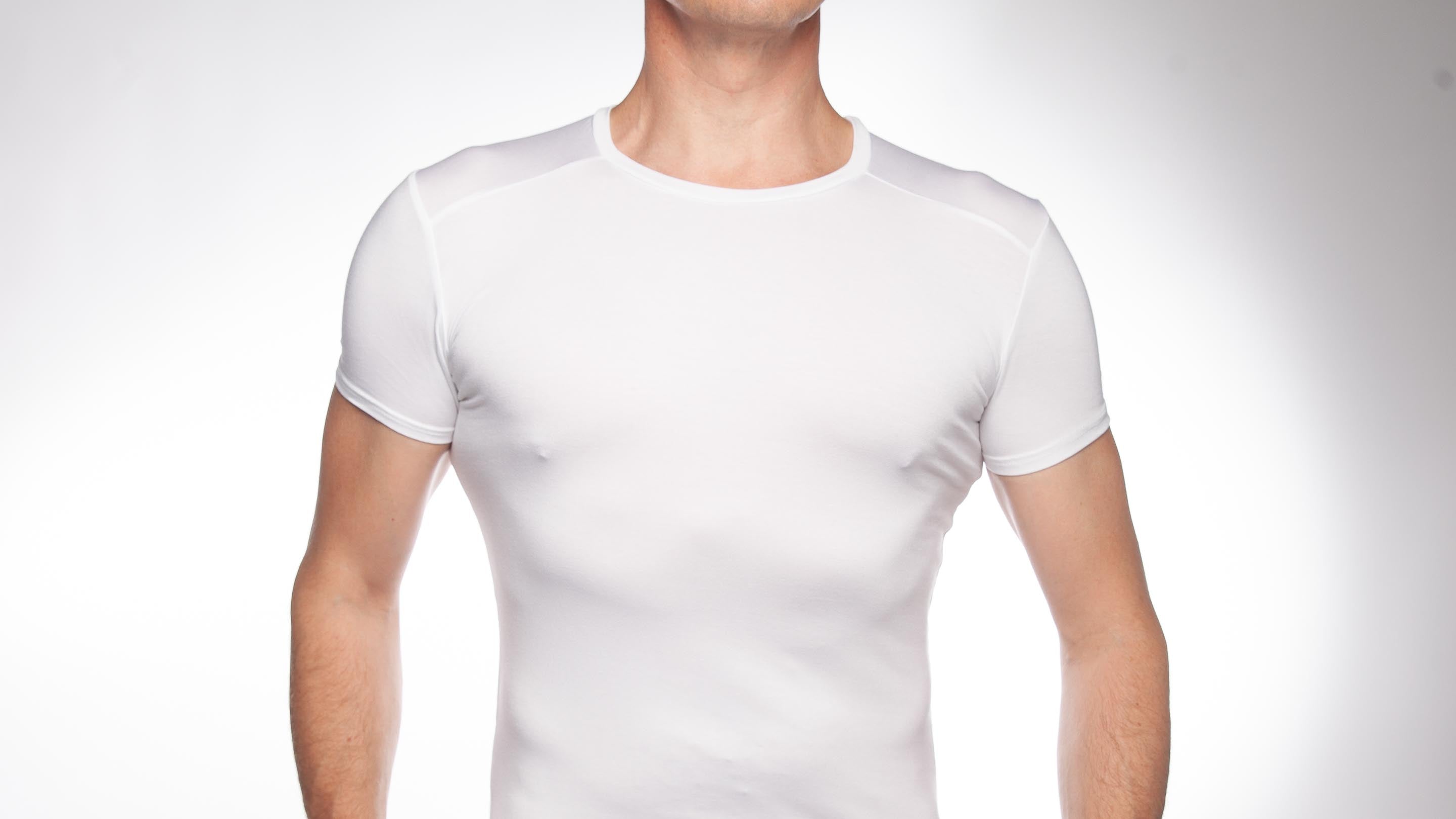9 Tips for men on managing sweat showing on clothing
Men tend to be bigger, hairier, generally more muscular than women, and men tend to sweat a lot more. For many men, sweat and body odour is more than an unpleasant sensation — it can ruin clothes. It can feel pointless shelling out money for a shirt or jumper you love if it's going to be stained with sweat quickly.
Here are some ideas and tips to help take care of you and your clothes so that you can wear that shirt or jumper and maintain your look.
1. Use antiperspirant or deodorant
Use a good antiperspirant or powder, especially during the summer months. If you don't like spraying, use a powder or rock crystal deodorant. Both of these act as a deodorant by protecting against bacteria which helps to neutralise odour. Be aware that if you use products, these are likely to end up on your shirt (or jumper). To prevent this, you may want to consider using a sweat pad (see 3) or wearing an undershirt (see 4) to help protect your outer layer.
2. Remove underarm body hair
Yes, remove your excess body hair. Your antiperspirant needs to come in contact with your skin to effectively protect against body odour and control sweating. This becomes a problem when your armpit hair is long as it acts as an obstacle between the product and your skin. Take control by giving yourself a little trim, or, if you are brave, take it all off by underarm waxing.
3. Use sweat pads or sweat shields
Use underarm sweat pads. These usually have a sticky side that adheres to your skin, or clothing, forming a physical barrier between your sweat and clothing. These are inexpensive, and there are many varieties available online.
4. Wear a moisture-absorbing undershirt
Although it might sound counter-intuitive to wear an extra layer, smart layering can help sweatproof your clothes and reduce the not-so-fun effects of sweating. Your best bet is to layer a moisture absorbing undershirt under your shirt or jumper. Our Sweat Proof (Oxford) undershirt has an extra layer of sweat proof material under the arm between two layers of bamboo material, making it even more sweat friendly.
5. Think about your shoes
Feet get hot and sweaty, and they start to smell (a lot) if in the wrong shoes. I don't know about you, but I've had to wash trainers and canvas shoes due to offensive odour. Synthetic boots and shoes are to be avoided as these can make your feet smell like a swamp.
Advice is that it's best to wear leather shoes or sandals (if you can), as they breathe more and, therefore, decrease foot sweat and the offensive odour.
Whatever your footwear, you may also want to slip a moisture-absorbing insole into your shoes as this will help reduce bacterial growth. You can also give the inside of your shoes a quick spray with a shoe deodoriser or use an OTC foot powder to help absorb sweat.
If your feet are prone to pong, don't wear the same pair of shoes every day. Rotating your shoes helps them to dry out in the air, and this prevents them smelling as bad.
6. Change your socks
It may seem obvious but change your socks daily to avoid smells. It will also help to prevent you from getting a fungal infection that thrives in moist, sweaty and bacteria-ridden conditions. If you are prone to these infections, consider carrying spare socks and changing during the day.
7. Soak your clothes
If you sweat a lot during the day, then soak your shirt in cold water as soon as you get home. Don't use hot water when removing sweat stains; always soak and wash in cold water. This is because heat from using hot water and heat from your dryer can cause the stains to set.
Apply a stain remover to the armpits or, if you prefer more natural methods, use baking soda or white wine vinegar. I prefer to turn the shirt inside out and apply the stain remover to the inside of the shirt. Leave the product on the shirt for a few minutes and launder as soon as possible (on cold).
8. Choose the right material for your clothing
On particularly hot days, go for fabrics like cotton, linen or a viscose type of fabric instead of polyester or other synthetics. Natural fibres allow your skin to breathe more easily, so you should sweat less. When the temperature rises, pick featherlight materials and choose shirts that are slightly larger than the size you usually wear to encourage air circulation and sweat evaporation.
9. Wear the right colours
When it comes to colours, white or pale pastels will deflect more of the sun's rays, so you'll feel the heat less in these softer shades. However, sweat tends to show up more on lighter colours so you may want to pick a pattern to help with this, or if it's not too hot choose a darker colour, such as navy.
It's good to remember that sweating is a natural process, and it's hard to stop sweating entirely. However, try out these ideas to help you feel more confident about whatever you are doing.





